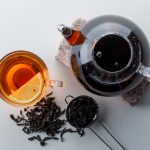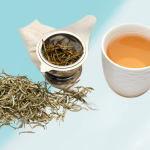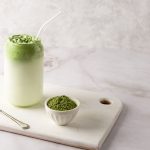
The Tradition and Culture of English Tea
Tea is a fundamental part of British culture, enjoyed daily by millions. Known as “English tea” or “english morning tea”, this tradition has a rich history and a significant influence on the UK’s social habits. From its arrival in England to the iconic afternoon tea ritual, tea has become a symbol of British identity.
The Origin of Tea in England
Tea first arrived in England in the 17th century, brought by traders from the East India Company. However, it was Queen Catherine of Braganza, wife of King Charles II, who popularized tea drinking at the British court. A Portuguese royal, Catherine already had the habit of drinking tea and introduced it to English aristocracy. Tea quickly gained popularity, becoming a valuable commodity and a symbol of social status.
Over time, tea consumption spread beyond the nobility to the general public. In the 18th century, tea houses began appearing in London, offering a comfortable space where people could enjoy tea and socialize. These tea houses became popular meeting places, especially for women, who had limited public social venues at the time.
Who Introduced Tea to England?
While tea was brought to England by East India Company merchants, it was Queen Catherine of Braganza who made it fashionable. After marrying King Charles II in 1662, Catherine brought the Portuguese tradition of tea drinking to England, quickly turning it into a favourite among the aristocracy. Her influence was so significant that within a few decades, tea became one of the most consumed beverages in the country.
Afternoon Tea: A British Tradition
The famous afternoon tea emerged in the 19th century, thanks to Anna, the Duchess of Bedford. At the time, the British typically ate only two meals a day: breakfast and a late dinner. To curb her afternoon hunger, the duchess began enjoying tea with small snacks. The practice quickly caught on among the aristocracy and spread throughout British society.
The tradition of afternoon tea began as a light meal between breakfast and dinner. The Duchess of Bedford noticed she felt hungry in the late afternoon and started a routine of tea with sandwiches, cakes, and scones. Her idea became a fashionable ritual among the British elite and eventually a national custom. Today, afternoon tea remains one of the UK’s most iconic traditions.
Served with cakes, scones, sandwiches, and other treats, afternoon tea is still a cherished occasion. On special days, elegant tea services are offered in luxury hotels and traditional tea rooms.
Afternoon tea etiquette includes rules such as holding the cup correctly, not raising the pinky, and stirring tea quietly. Traditionally, milk is poured before the tea to prevent fragile porcelain cups from cracking due to the heat.
English Breakfast Tea: The Classic British Morning Drink
Among the various types of tea enjoyed in the UK, English Breakfast Tea stands out as one of the most popular. This bold blend of tea leaves from India, Sri Lanka, and Africa offers a rich, slightly malty flavour. Traditionally served with milk and sometimes sugar, it’s the perfect drink to start the day with energy – a true english morning tea.
How Much Caffeine in English Breakfast Tea?
Yes, English tea does contain caffeine – especially black teas like English Breakfast. On average, a cup contains between 40 to 70 mg of caffeine, depending on the steeping time. While it has less caffeine than coffee, black tea still provides a noticeable energy boost, making it an excellent alternative to coffee.
English Breakfast Tea is also appreciated for its versatility. It pairs well with various kinds of milk, including plant-based options, and complements a wide range of breakfast foods like buttered toast, scrambled eggs, and pancakes. Its strong flavour makes it a favourite in traditional British breakfasts.
The Influence of Tea on British Culture
English tea is more than just a drink – it’s a cultural experience. It’s present at formal and informal occasions, from business meetings to family gatherings. Tea is served during special events like birthdays, weddings, and national celebrations.
On commemorative dates, such as St. George’s Day (April 23rd), themed afternoon tea events are common in restaurants and tea houses. These often include scones, jams, and clotted cream, offering a truly authentic experience.
Tea’s impact on British culture goes beyond daily consumption. It has influenced literature, art, and even fashion. Classic novels by authors like Jane Austen often feature tea-centric social gatherings. The tea ritual also inspired the creation of fine china and elegant utensils, many of which are now collectible.
Interestingly, tea played a key role during significant historical events. For instance, during World War II, the British government ensured tea supplies to help maintain public morale. Tea became a symbol of comfort and resilience during tough times.
The British and Tea Today
Despite modern trends and the rise of drinks like coffee and soft drinks, tea remains one of the most iconic parts of British life. Studies show that over 100 million cups of tea are consumed daily in the UK. Black teas remain the national favourite, with English Breakfast Tea topping the list.
Recently, herbal teas and infusions have gained popularity, especially among younger generations seeking healthier options. However, the tradition of black tea with milk continues strong as a daily staple in British homes.
Conclusion
English tea is more than a beverage – it’s a symbol of British culture and tradition. From its introduction in the 17th century to the beloved afternoon tea custom, tea remains a vital part of daily life in England. With its full-bodied, energizing flavour, English Breakfast Tea is the perfect way to start your day.
If you want to experience a true taste of Britain, enjoy a cup of English Breakfast Tea and bring a piece of British tradition into your everyday life!








No Comments